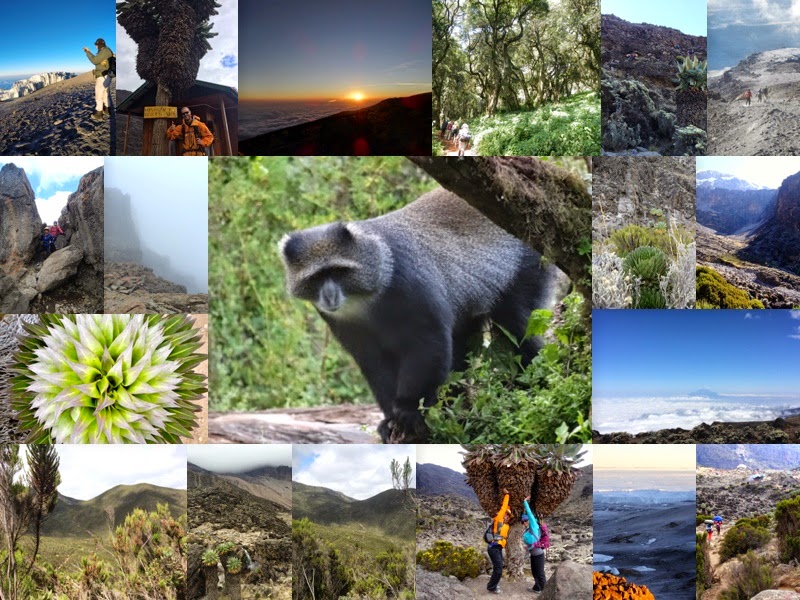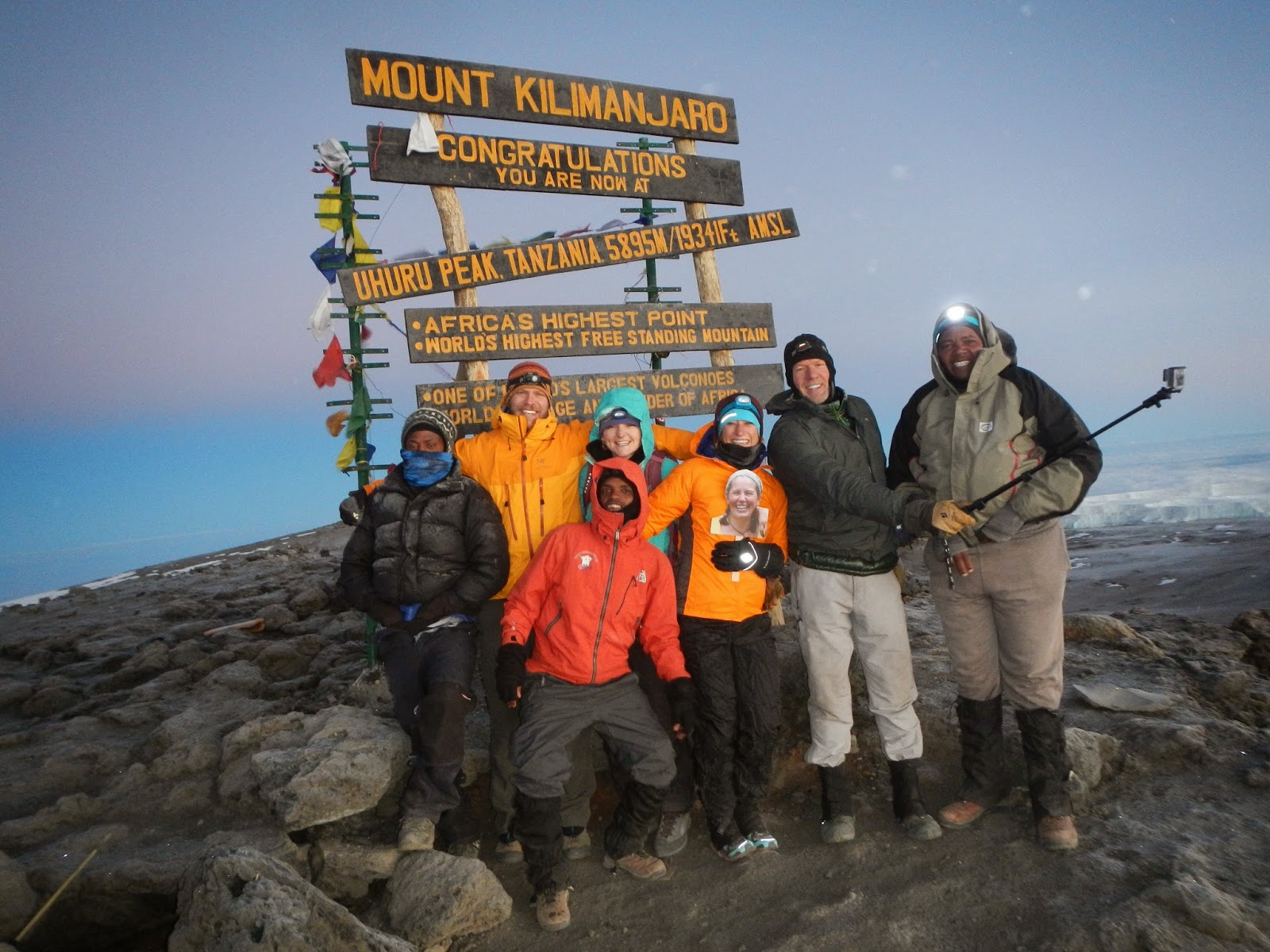 |
| Our journey takes on on a flight from Milan to a layover in Istanbul, and on to a late-night arrival in Moshi, at the Kilimanjaro airport. |
Click HERE for Flickr Kili Photo Album
We hiked the Lemosho route for 8 days, to be assured of good acclimatization. We had wonderful guides who continuously told us to go "pole pole" along this route. SLOW, SLOW. That was hard for a strong group of CrossFitter's who's every waking moment is trained to go "Haraka Haraka" (Faster, Faster!). After a demonstration of our incredible fitness of some pushups and squats and handstands, we had a breakthrough with one of our guides on what we are truly capable of doing and were able to pick up some speed, though still maintain a pace that would keep us successful toward our goal of summitting without getting sick!Kilimanjaro is technically the easiest to climb of the Seven Summits . You don’t need ropes or special mountaineering gear, or even any previous mountain climbing experience. The youngest person to reach the summit was six years old, and the eldest was 83. That does not mean Kilimanjaro is risk-free. Rock slides and acute altitude sickness kill ten climbers on average each year.
Kilimanjaro is both remote and accessible. Kilimanjaro is located in Tanzania, just south of the equator, next to the Serengeti. But regular flights fly nonstop from Europe to the Kilimanjaro airport. Around the mountain there’s surprisingly good support infrastructure for an impoverished country—decent hotels, outfitters, gear to rent, ground transportation. On the mountain there are sleeping huts along the main route, with porters who carry and set up tents and kitchen facilities on the other routes.
Park Rangers weigh all the bags coming on and off the mountain and trekking companies pay heavy fines if the bags come down light. This greatly reduces dumping on the trail. There are basic outhouses along the way what while far from luxurious, provide privacy and keep the mountain clean. There are only seven trails up to the summit, and no roads. As a result, despite relatively heavy traffic, the mountain has retained its wild nature.
Kilimanjaro is a hot spot for studying climate change. Ice cores show the glaciers to be 11,700 years old—and yet they will all be gone in the next 20-30 years. One researcher put it like this: “You can stand next to the ice and see the glaciers turning to vapor before your eyes.”
Climbing Kilimanjaro contributes to a thriving local economy, generating about $20 million/year. Guides, porters, cooks, hotel staff, food producers, travel and trekking agencies, merchants, construction companies and banks all create local jobs in a region that remains one of the poorest on earth.
Kilimanjaro inspired a continent to freedom. Kilimanjaro belongs to Tanzania, the first nation in Africa to win independence from colonial powers. Before independence in 1959, soon-to-be President Julius Nyerere said: “We, the people of Tanganyika, would like to light a candle and put it on the top of Mount Kilimanjaro which would shine beyond our borders giving hope where there was despair, love where there was hate, and dignity where before there was only humiliation.” Today, the summit is called Uhuru Peak–Uhuru is the Swahili word for “Freedom.”
People climb Kilimanjaro to mark a personal accomplishment. Individuals climb the mountain to mark important transitions: their graduation, their retirement, a marriage (we are marking our 12th anniversary!). Kilimanjaro inspires transformation. When you climb Kilimanjaro and stand on the roof of Africa, you see the world a different way. What seemed impossible in your life might just be do-able. The mountain top is a place for vision, inspiration, and a new beginning. As the famous song by Juluka goes: “I’m sittin’ on top of Kilimanjaro, I can see a new tomorrow. I’m sittin’ on top of Kilimanjaro. I cast away all my sorrows.” We brought Angie's "flat-Stanley" image with us to share her smile up there, to take her spirit with us, and help her be inspired to stay strong through her treatments. I hope that brings you some more smiles and know you're loved, Ang!














No comments:
Post a Comment